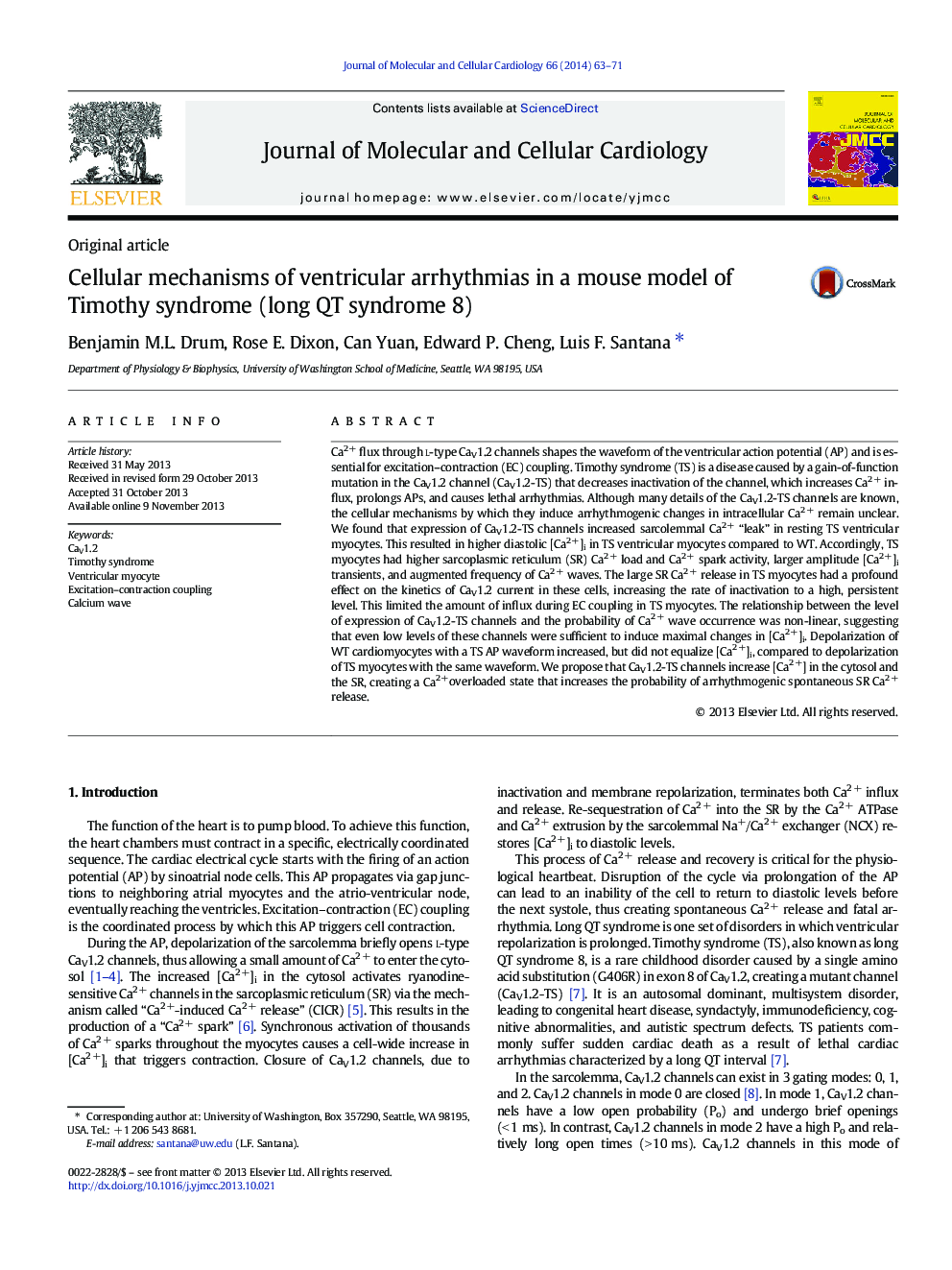| کد مقاله | کد نشریه | سال انتشار | مقاله انگلیسی | نسخه تمام متن |
|---|---|---|---|---|
| 2190552 | 1550439 | 2014 | 9 صفحه PDF | دانلود رایگان |

• Sarcolemmal Ca2 + “leak” and diastolic [Ca2 +]i are higher in TS than in WT cells.
• Sarcoplasmic reticulum Ca2 + load is higher in TS than in WT myocytes.
• Ca2 + release increases the rate of inactivation of CaV1.2 currents in TS myocytes.
• Few CaV1.2-TS are sufficient to induce maximal change in [Ca2 +]i.
• Ca2 +-overload in TS creates increased arrhythmogenic events.
Ca2 + flux through l-type CaV1.2 channels shapes the waveform of the ventricular action potential (AP) and is essential for excitation–contraction (EC) coupling. Timothy syndrome (TS) is a disease caused by a gain-of-function mutation in the CaV1.2 channel (CaV1.2-TS) that decreases inactivation of the channel, which increases Ca2 + influx, prolongs APs, and causes lethal arrhythmias. Although many details of the CaV1.2-TS channels are known, the cellular mechanisms by which they induce arrhythmogenic changes in intracellular Ca2 + remain unclear. We found that expression of CaV1.2-TS channels increased sarcolemmal Ca2 + “leak” in resting TS ventricular myocytes. This resulted in higher diastolic [Ca2 +]i in TS ventricular myocytes compared to WT. Accordingly, TS myocytes had higher sarcoplasmic reticulum (SR) Ca2 + load and Ca2 + spark activity, larger amplitude [Ca2 +]i transients, and augmented frequency of Ca2 + waves. The large SR Ca2 + release in TS myocytes had a profound effect on the kinetics of CaV1.2 current in these cells, increasing the rate of inactivation to a high, persistent level. This limited the amount of influx during EC coupling in TS myocytes. The relationship between the level of expression of CaV1.2-TS channels and the probability of Ca2 + wave occurrence was non-linear, suggesting that even low levels of these channels were sufficient to induce maximal changes in [Ca2 +]i. Depolarization of WT cardiomyocytes with a TS AP waveform increased, but did not equalize [Ca2 +]i, compared to depolarization of TS myocytes with the same waveform. We propose that CaV1.2-TS channels increase [Ca2 +] in the cytosol and the SR, creating a Ca2 +overloaded state that increases the probability of arrhythmogenic spontaneous SR Ca2 + release.
Journal: Journal of Molecular and Cellular Cardiology - Volume 66, January 2014, Pages 63–71